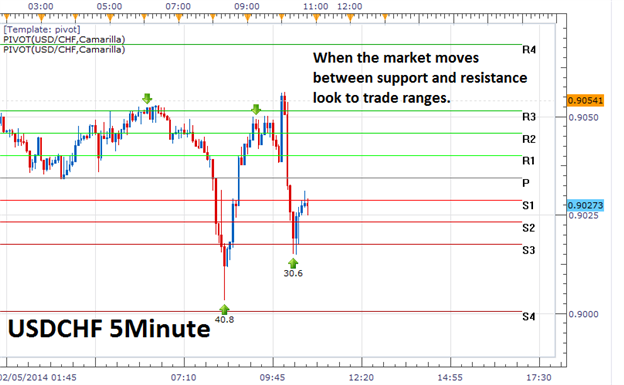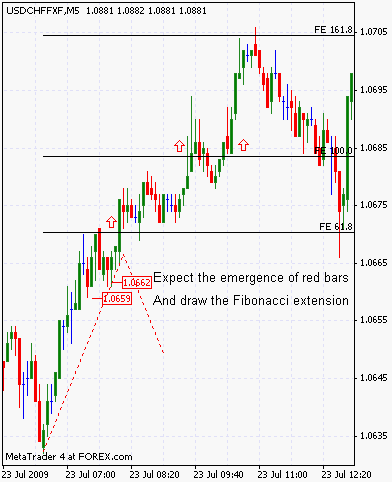A Beginner s Guide To Scalping In The Forex Markets
Post on: 31 Март, 2015 No Comment

Scalping, at least in trading, is a term used to denote the skimming of small profits on a regular basis, by going in and out of positions several times per day. Scalping is not unlike day trading in which a trader will open a position and then close it again during the current trading session; in other words never carrying a position into another trading period or holding a position overnight. Whereas a day trader may look to take a position once or twice, or even a few times a day, scalpers are much more frenetic and try to skim really small profits multiple times in a session. And whereas a day trader may trade off the five-minute and the 30-minute charts, scalpers will often trade off of tick charts and one-minute charts. In particular, some scalpers like to try and catch the high-velocity moves that occur around the time of the release of economic data and other important news events, such as the release of the employment statistics or GDP releases if that is what is high on the economic agenda.
Scalpers like to try and scalp between five and 10 pips from each trade they make and to repeat this process over and over throughout the day. Using high leverage and making trades with just a few pips profit at a time can add up, especially if your trades are profitable and can be repeated many times over the course of the day. Remember, with one standard lot, the average value of a pip is about $10. So, for every five pips of profit made, the trader can make $50 at a time. Ten times a day, this would equal $500.
The Scalper’s Personality
Scalping, though, is not for everybody, and one thing is for sure: You have to have the temperament to be a scalper. Scalpers need to love sitting in front of their computers for the entire session, and they need to enjoy the intense concentration that it takes to scalp. You cannot take your eye off the ball when you are trying to scalp a small move, such as five pips at a time. Even if you think you have the temperament to sit in front of the computer all day, or all night if you are an insomniac, you must be the kind of person who can react very quickly without analyzing your every move. There is no time to think. Being able to pull the trigger is a necessary key quality for a scalper. This is especially true in order to cut a position if it should move against you by even two or three pips.
The Difference Between Market Making and Scalping
Scalping is somewhat similar to what market makers do who trade around the spread. When a market maker buys a position he is immediately seeking to offset that position and capture the spread . Although the two types of investors serve different purposes, this is what a market maker does all day long. This is not referring to those bank traders who take proprietary positions for the bank.
The difference between a market maker and a scalper, though, is very important to understand. A market maker earns the spread, while a scalper pays the spread. So when a scalper buys on the ask and sells on the bid, he has to wait for the market to move enough to cover the spread he has just paid. In the converse, the market maker sells on the ask and buys on the bid, thus immediately gaining a pip or two as profit for making the market. Thus, the risk of a market maker compared with a scalper, although they are both seeking to be in and out of positions very quickly and very often, is much better for the market maker than the scalper. Market makers love scalpers because they trade often and they pay the spread, which means that the more the scalper trades the more the market maker will earn the one or two pips from the spread. (Find out how this tool magnifies both gains and losses. Check out Forex Leverage: A Double-Edged Sword .)
The Pros and Cons of Scalping
Scalping is very fast paced. If you like the action and like to focus on one or two minute charts, then scalping may be for you. If you have the temperament to react quickly, and have no compunction in taking very quick losses, not more than two or three pips, then scalping may be for you.

But if you like to analyze and think through each decision you make, perhaps you are not suited to scalp.
How to Set Up for Scalping
Setting up to be a scalper requires that you have very good, reliable access to the market makers with a platform that allows for very fast buying or selling. Usually the platform will have a buy button and a sell button for each of the currency pairs . so that all the trader has to do is hit the appropriate button to either enter or exit a position. In liquid markets, the execution can take place in a fraction of a second.
As a trader, it is up to you to research and understand the broker agreement and just what your responsibilities would be and just what responsibilities the broker has. You must pay attention to how much margin is required and what the broker will do if positions go against you, which might even mean an automatic liquidation of your account if you are too highly leveraged. Ask questions to the broker’s representative and make sure you hold onto the agreement documents. Read the small print.
The Broker’s Platform














